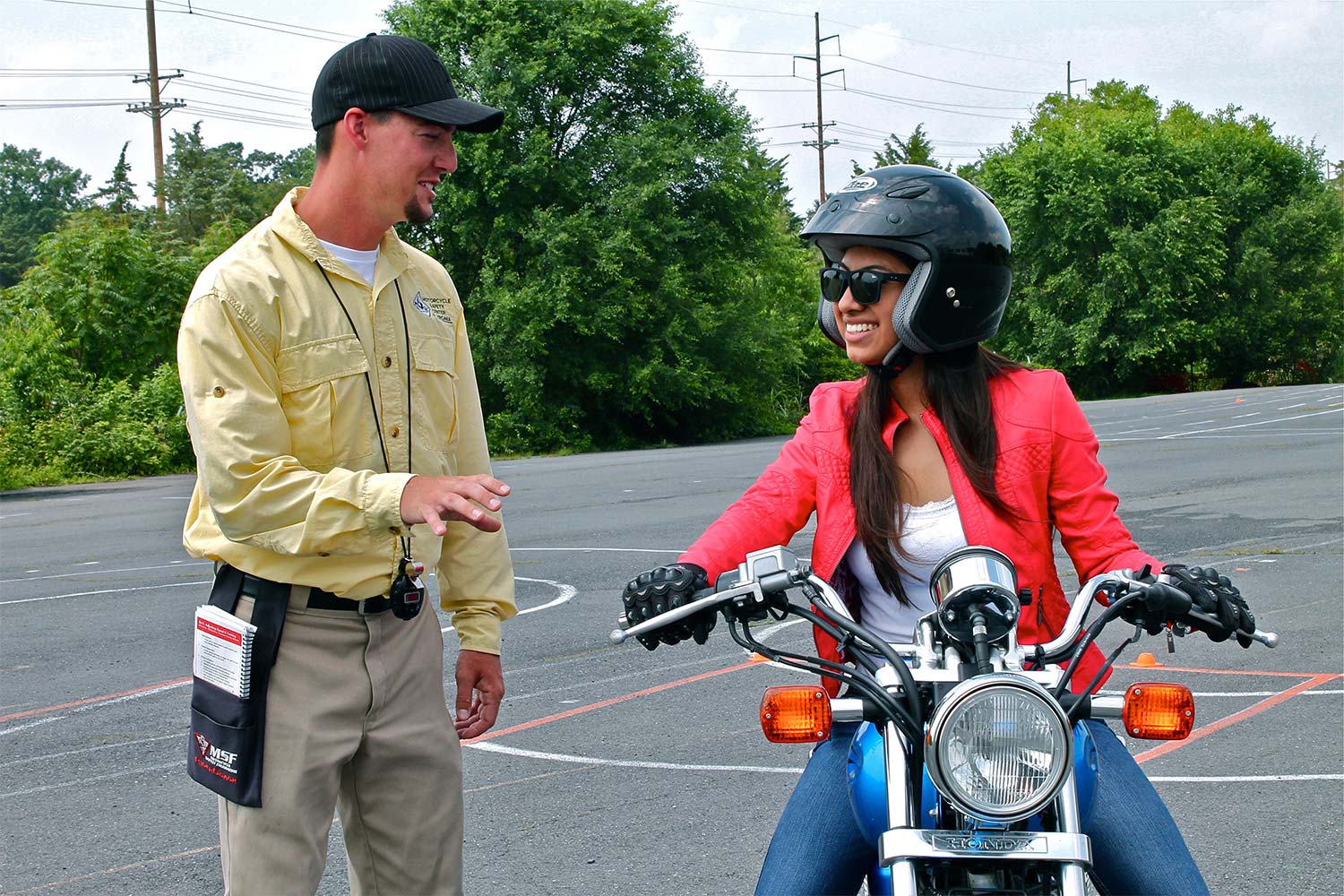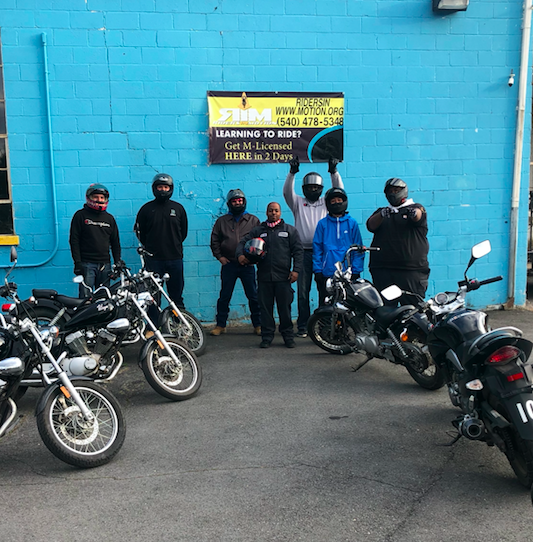Our Basic RiderCourse is now hybrid!
This means the entire classroom is completed online, preparing students at home before coming to class to ride.
Online classroom
This is completed at home on a student’s own time. If a student were to take the eCourse all at once, it takes approximately 5 hours to complete. However, all courses can be completed in segments, and the system automatically picks up where the student left off. There is no time limit to complete the eCourse, and attempts don’t expire. The course is mobile-friendly and can be accessed on smartphones and tablets, however a computer or laptop is highly recommended for viewing ease. The knowledge test is included in the eCourse. This course must be completed by every student regardless of any previous DMV testing. Students will not be permitted to ride unless they have completed this online classroom
In-person riding
You will be paired with a group of up to 9 riders. Divided between two days, the course will consist of about 11 hours total of range exercises on a motorcycle (motorcycle provided OR bring your own! Contact us prior to class if you plan to bring your own motorcycle to be sure yours meets our specifications). Upon successful completion of the course, the student will be issued a temporary, 30-day M2 (two-wheel motorcycle) license to be carried with a valid VA driver’s license; simply show this completion card to the DMV so they can add the M2 designation to your VA driver’s license. Successful completion of this course waives the Virginia DMV knowledge and road skills tests for most students.
You will be outside in the elements for 2 days; prepare accordingly.
Completing the Basic RiderCourse may also reduce your motorcycle insurance premiums! Check with your insurance provider.
The Basic RiderCourse is taught at a pace that results in successful completion for most novice riders, and our coaches will assist you to learn to the best of your ability. That said, if you have significant difficulty or become a risk to yourself or others, as determined by you or your coach, you will not be permitted to continue to ride. If you are concerned you may not be able to keep up, consider our 2-hour Introductory Motorcycle Experience (IME) course to gain familiarity and practice with the clutch before taking the Basic RiderCourse.
To successfully complete the course, you must:
- Attend and participate in all sessions.
- Achieve a minimum score on a knowledge test covering course materials.
- Achieve a passing score on a riding-skill evaluation.
Successful completion of the Basic RiderCourse does not guarantee your safety on the road. Only you can choose the level of safety that you wish to maintain. The course will supply you with opportunities to acquire a baseline knowledge and skill set enabling you to continue to practice and develop safe riding habits. Safe riding is also a mindset, and only you can provide that.
Motorcycles will be provided for the course.
We are passionate about student safety: students will NOT be permitted to ride without the above safety gear!
Riding Gear Requirements
Helmet — we have helmets you may borrow if needed
Helmet - Full-face, 3/4 helmets are acceptable, provided that they meet minimum DOTcertification. Personal helmets are subject to inspection for the DOT certification and that they are in good working condition. 1/2 shell helmets are not permissible.
Eye Protection
Eye protection - Face shield, goggles or some form of sun/eye glasses. They may be tinted or clear. Ordinary prescription glasses may be worn. For night training eye protection must be clear.
Long Sleeves
Long sleeve T-shirt or dress shirt that reaches the wrist or jacket are all acceptable.
Sturdy Pants
You must wear pants! No exceptions. Denim or leather jeans are preferred. All pants are required to have NO holes in them and must come down to the foot. Dress slacks, spandex, leggings, and sweatpants are NOT permissible.
Full-finger Gloves — we have gloves you may borrow if needed
Must be full finger and cannot be open on the back of the hand or knuckles. Gloves must be motorcycle specific or sturdy leather or synthetic. (Dishwashing gloves and surgeon's gloves are NOT permissible)
Over-the-ankle Boots or Shoes
MUST completely cover your ankle, have little to no heel (NOT cloth, canvas, etc.), and have a good rubber sole for traction. Thin fabric shoes made of canvas or other non-boot fabrics are not permissible.



